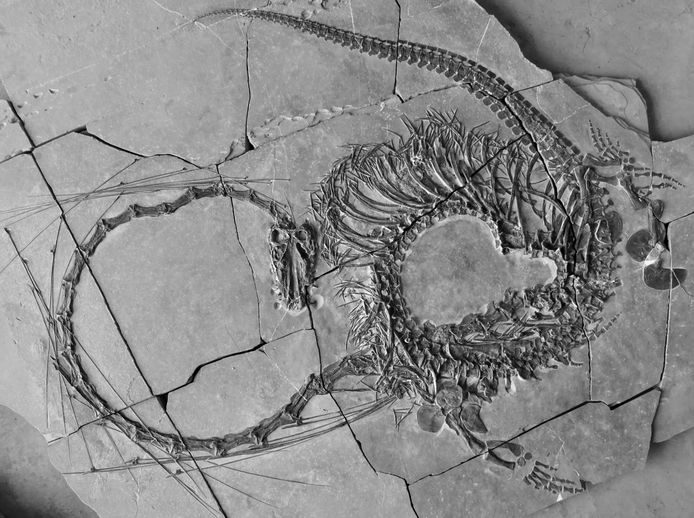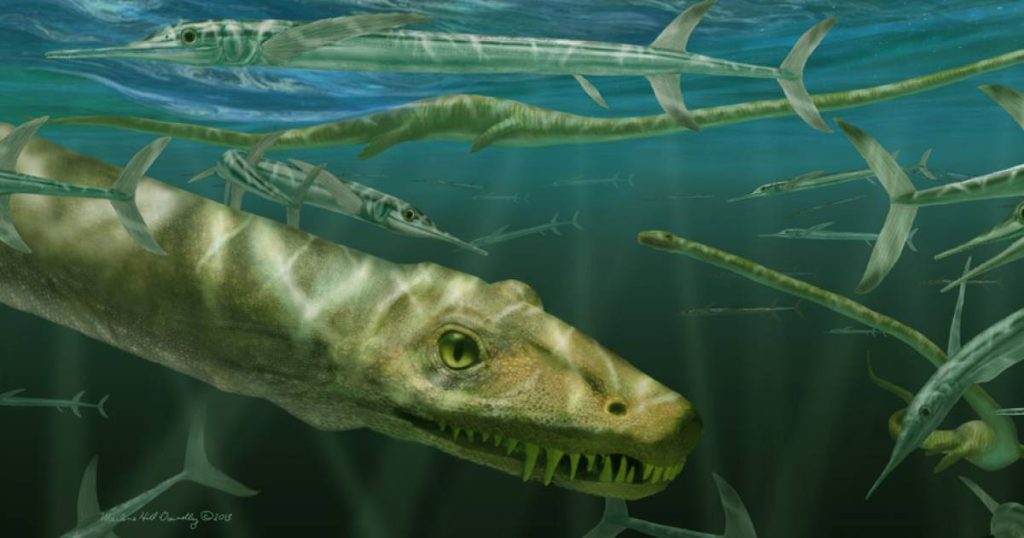An international team of researchers has described recently discovered fossils of a 240-million-year-old Chinese dragon. The new fossils provide a complete picture of the remarkable animal: a five-metre-long reptile that lived in the water in China. This was reported by the Dutch newspaper AD.
With a total of 32 individual cervical vertebrae, the six-metre-long animal – official name Dinocephalosaurus orientalis – had an exceptionally long neck. As a result, its appearance resembles a snake or a Chinese dragon. Researchers from Scotland, Germany, the United States and China studied the fossils for ten years to get a complete picture of the distinctive creature.
Dinosaurs lived during the Triassic Period, the era in which the first dinosaurs appeared and covering the period from approximately 251.9 to 201.3 million years ago. This animal lived mainly in water and was well adapted to life in the sea. For example, Deinocephalosaurus had webbed limbs. Researchers also found “excellently preserved fish” in his stomach.
“Among all the extraordinary discoveries we have made in the Triassic in Guizhou, the dinosaur head probably stands out as the most fascinating,” said Professor Li Chun from the Institute of Vertebrate Paleontology and Paleoanthropology of China.
Read more below the picture

Legendary Chinese dragon
The dinosaur was first identified in 2003, but only the skull of the animal was discovered. Since then, more specimens containing more parts of the animal have been found, including one completely complete fossil. As a result, for the first time, scientists are now able to paint a complete picture of a dinosaur head.
Stefan Spykmann of the University of Stuttgart, a paleontologist and lead author of the study published on Friday in the journal Earth and Environmental Sciences of the Royal Society of Edinburgh, called it an “amazing experience” to be able to contribute to “these important discoveries.”
“We hope that our future research will help us understand more about the evolution of this group of animals, especially how their long necks work,” he said.
Nick Fraser, co-author of the study and Head of Natural Sciences at the National Museum of Scotland, said: “This discovery allows us to see this magnificent long-necked animal in its entirety for the first time.” “It is another example of the strange and wonderful world of the Triassic that continues to fascinate paleontologists. We are confident that it will capture imaginations around the world with its stunning appearance, reminiscent of the legendary long, serpentine Chinese dragon.”
Free unlimited access to Showbytes? Which can!
Log in or create an account and never miss a thing from the stars.

“Lifelong food practitioner. Zombie geek. Explorer. Reader. Subtly charming gamer. Entrepreneur. Devoted analyst.”











More Stories
Revealing the ten countries that support Ukraine the most
Funny protest against mass tourism in Galician village
Kamala Harris has wind in her sails, but Trump can still win